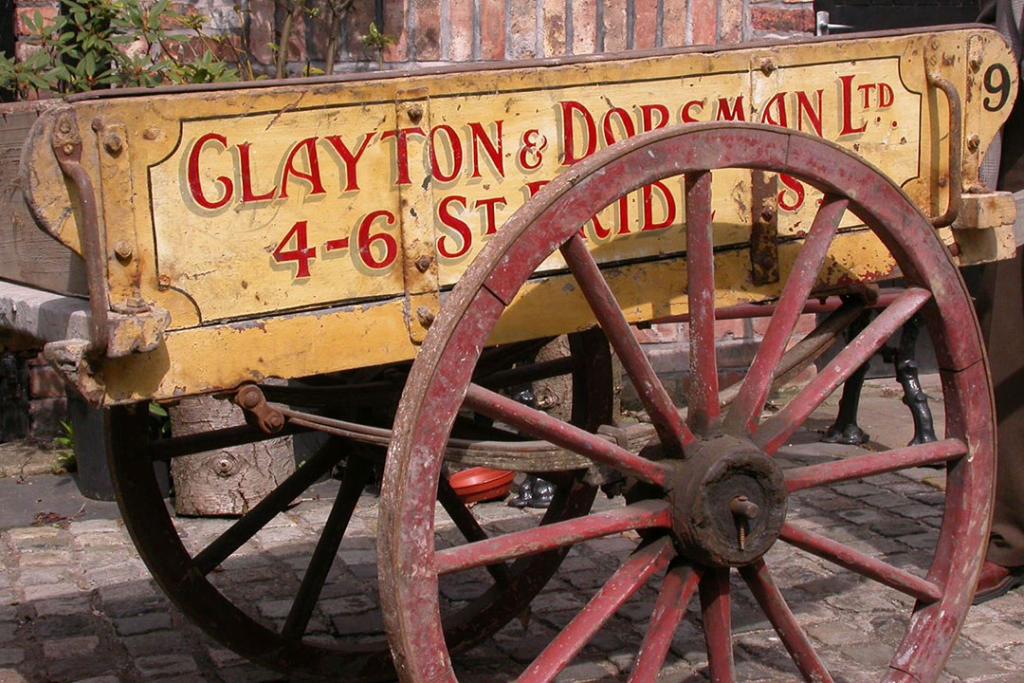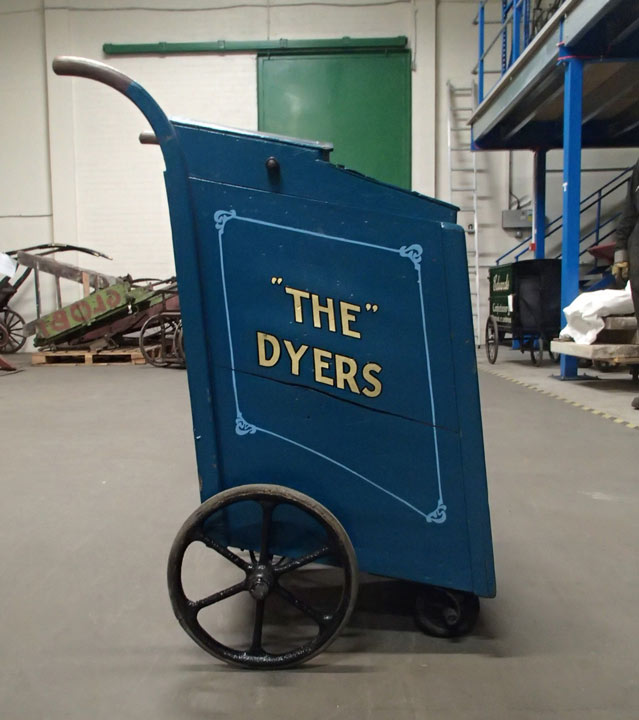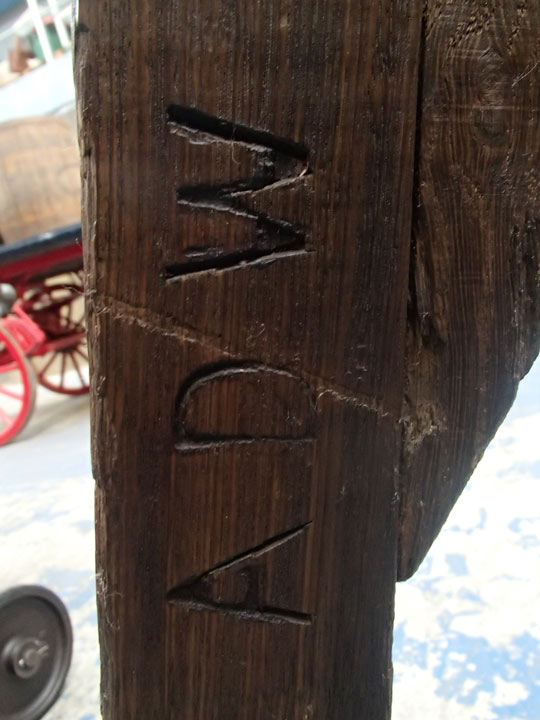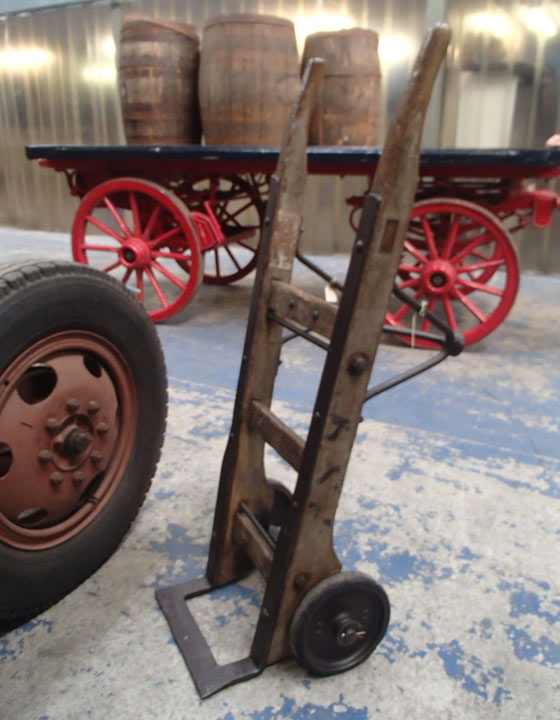Handcarts - a moving story

Having recently delivered my daughter to university I could have done with a heavy movement bogie, a two-wheeled flat-top handcart, a shrimper’s flat barrow, a sack truck or a sugar truck. Any one of these hand-propelled carts in our collection would have helped take the hard labour out of moving suitcases, boxes, a sewing machine, and the general detritus of modern student life!
Hand-powered trucks were essential to everyday life in a busy port city. They came in all shapes and sizes and were often tailored to particular commodities, but they did the job as a cost-effective means of transport over shorter distances, saving workers on the docks and in warehouses and factories a lot of back-breaking work.
Many local firms made their handcarts and sack trucks in-house so they could meet the specific needs of their business and then also maintain and repair them when required. They were generally cheap to make but invaluable in their contribution to everyday work.
Advertisements on wheels
Shops and traders would deliver their smaller goods over short distances with delivery handcarts, which were usually brightly painted as a mobile advertisement.
In our Liverpool on Wheels exhibition we have some fine examples of locally made handcarts on display – a Clayton and Dorsman Decorator’s cart (pictured above), a Johnson’s Dyers pavement cart, and a couple of sack trucks.
Clayton and Dorsman Ltd were based at 4 & 6 St Bride Street and operated as decorators, joiners, builders and contractors. The business was started in 1879 by John Clayton who then joined up with Francis Dorsman in 1912. It was run by the Allan family from 1950 until it was wound up in 2000.
The cart, together with its ladders and planks would have been wheeled from one job to another and was the equivalent of today’s ‘white van’. The signwriting on the cart, completed by James Gannon in the 1950s, provided colourful advertising for the company.
Johnsons the Cleaners of Mildmay Road, Bootle, operated as dyers before the First World War and later expanded into the dry-cleaning business. In the early 1900s if people could not afford to buy new clothes or linens they would have them dyed for a new look as a cheap alternative and the cart was used to collect and deliver them.

Manufactured by Hill, Bascombe and Lancaster of Duke Street, Liverpool the cart is an attractive shade of blue with gold lettering to act as an eye-catching advertisement.
Sack trucks
Sack trucks were essential tools for moving goods around on the docks and in warehouses usually made in-house by haulage or warehousing companies. Palletisation reduced the need for handcarts. The transfer of materials today is more likely to be carried out by a fork-lift truck moving pre-loaded pallets than by a fleet of sack trucks moving individual sacks, bales or barrels.

In the land transport collection at the Museum of Liverpool we have many sack trucks that were once used on different docks or warehouses within the city. On display in the Liverpool on Wheels exhibition you can see a small truck that we believe was made in-house at the Albert Dock cooperage. It is marked 'ADW' indicating that it was used in the Albert Dock warehouses and was recovered from there during the 1970s.
Also on display is a larger version of the standard sack truck. It is lettered 'PLS' indicating that it was originally used on Princes Landing Stage. It was manufactured by Thomas Wilding & Sons, Rigby Street, Liverpool.

From the docks to a museum
These simple but essential hand-powered trucks tell us so much about the vast array of businesses and people moving all kinds of goods across Liverpool but I am sure that if the workers using them in their heyday had been told they would one day end up on display in a museum they would have been quite surprised and rather amused.
As for my daughter, we have to fetch her and all her worldly goods home again in a few weeks, I wonder if anyone would notice if I borrowed that flat-bed handcart with the lovely painted wheels...
